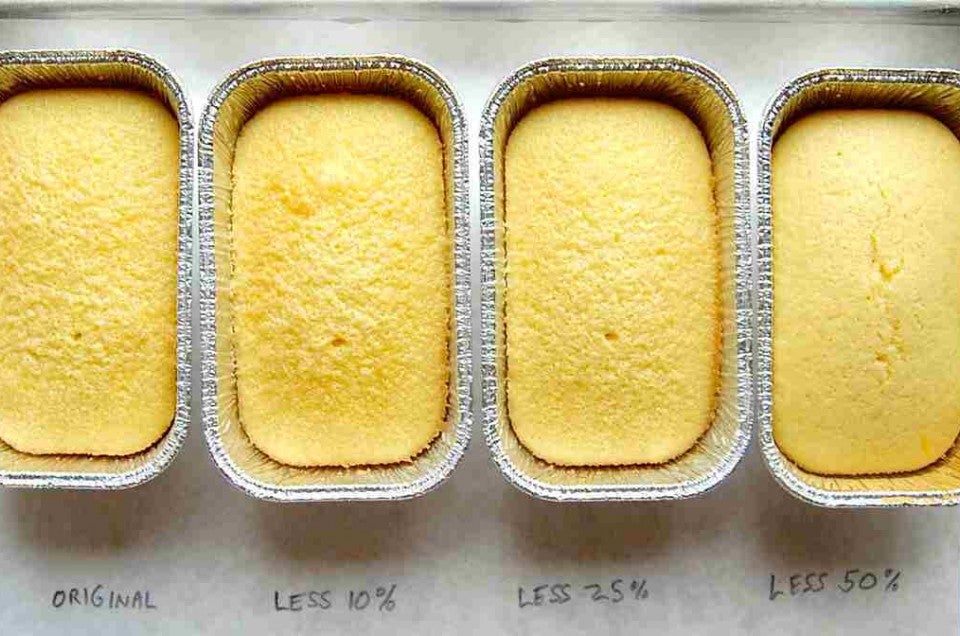


"Can I cut back the sugar in this cake recipe? Will the cake still be good?"
We've heard this question on our Baker's Hotline so frequently that we decided we'd best come up with a well-researched answer. So, multiple tests and many cakes later, here's the verdict:
Is it possible to reduce sugar in cake? Absolutely — learn how to get the very best results.
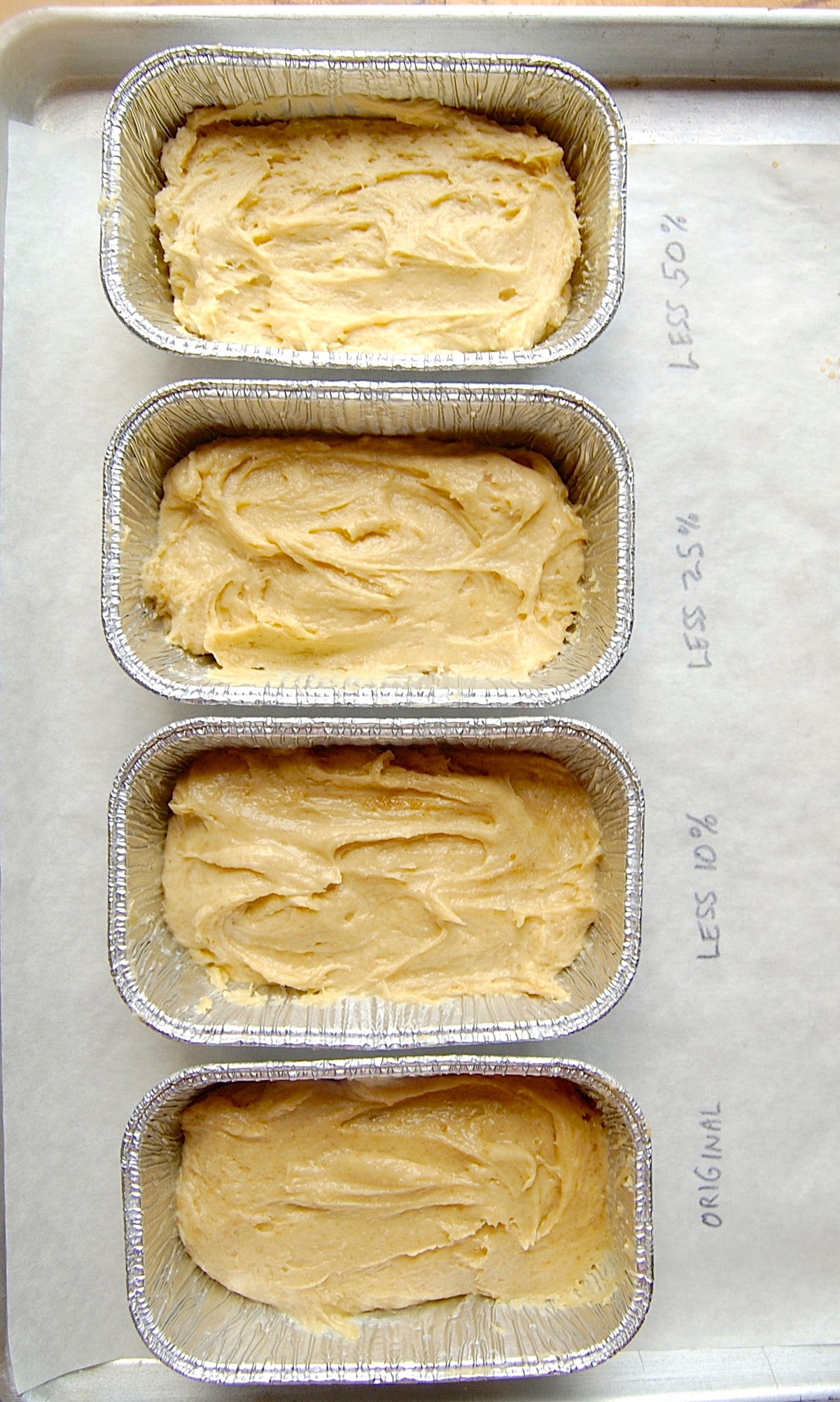
Unlike many other baked goods, the successful cake relies in equal parts on ingredients and technique. While just about any muffin batter can be stirred together, plopped into a pan, and baked to perfection, cakes are more finicky.
In fact, professional bakers divide cakes into four distinct types, based on preparation technique: blended, creamed, sponge, and foam.
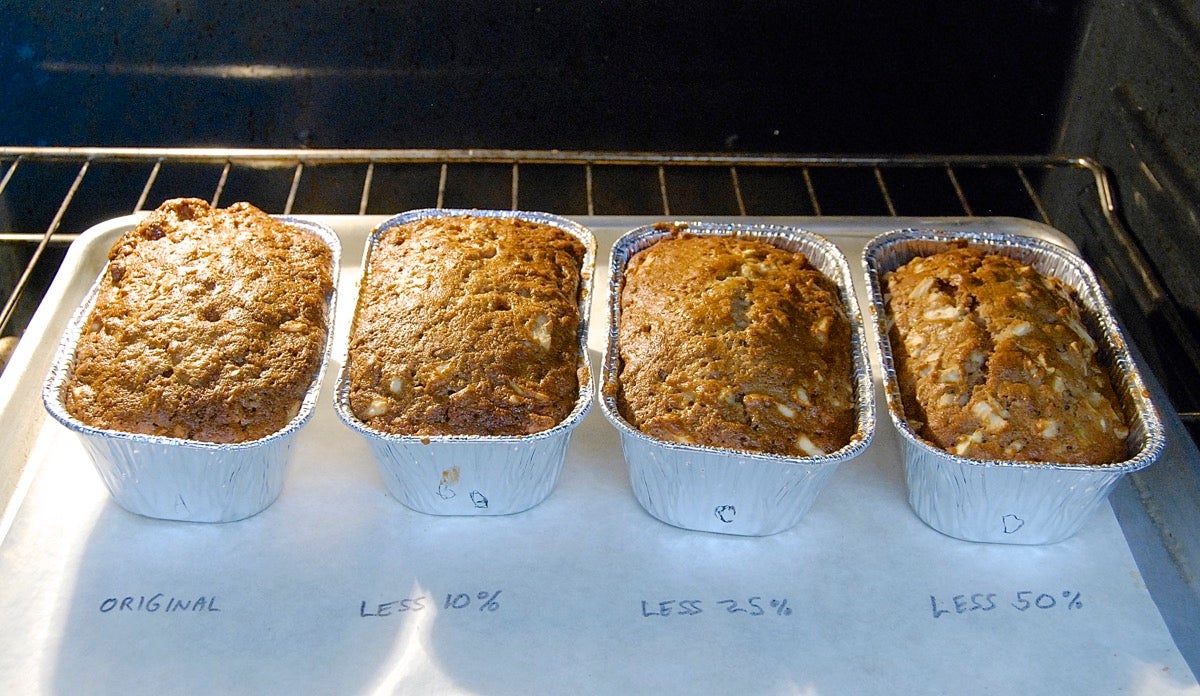
Blended cake is the most basic: you simply put all of the ingredients into a bowl and stir them together. Old-Fashioned Apple Cake is one example.
Sugar doesn't build volume in these cakes, but simply provides sweetness and moisture. Blended cakes are typically medium- to coarse-textured, and are often baked in a single layer: think sheet cake.
Once you get past this basic cake, though, the plot thickens (as does the batter).
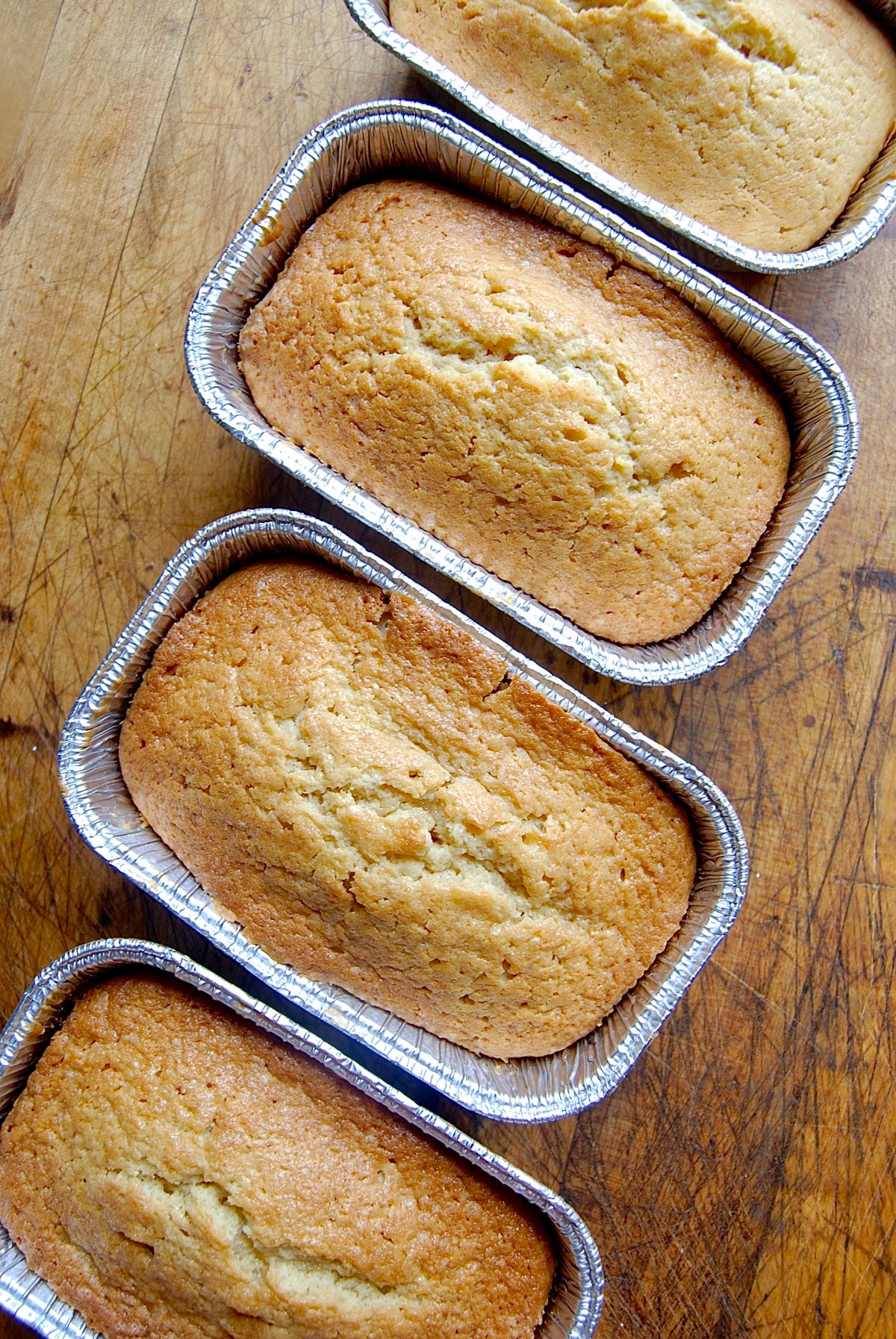
This type of cake relies on "creaming" (beating together) butter and sugar until they're lightened in color and fluffy. This builds volume and texture; these cakes may be high-rising, like our Classic Vanilla Bundt Cake — or denser, like the Brown Sugar Sour Cream Pound Cake pictured above. But they're uniformly fine-textured.
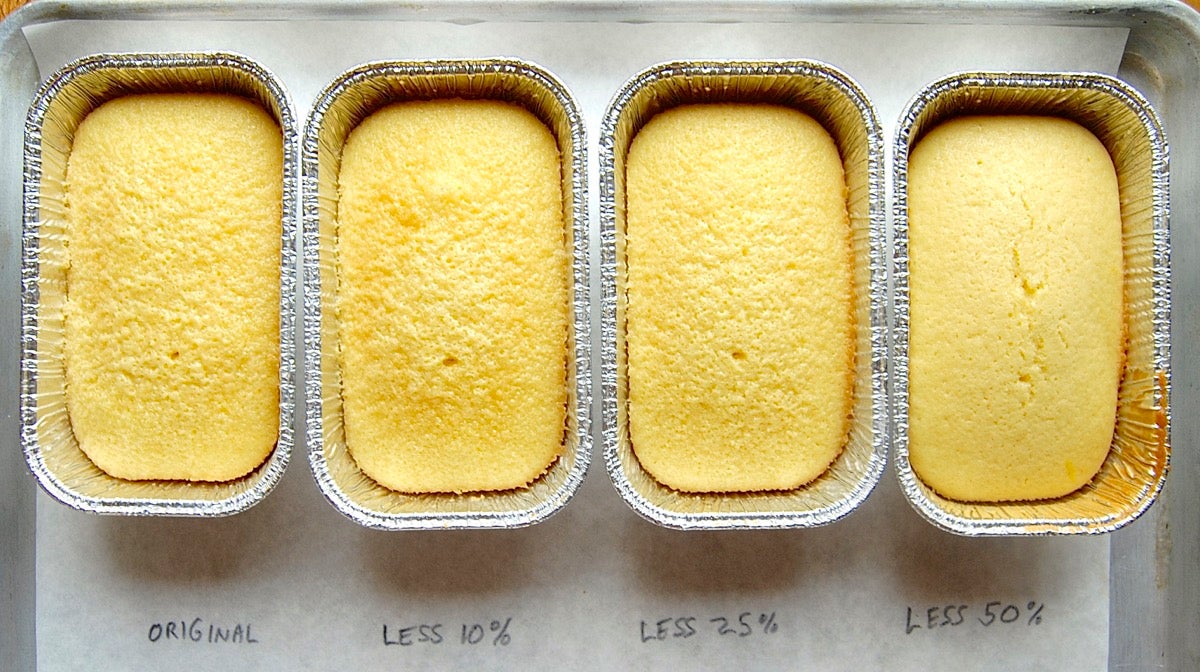
Another path to the same destination is sponge cake — e.g., Hot Milk Cake — which starts with a well-beaten mixture of eggs and sugar, instead of butter and sugar. Sponge cake tends to be moister than creamed cake, but is otherwise quite similar.
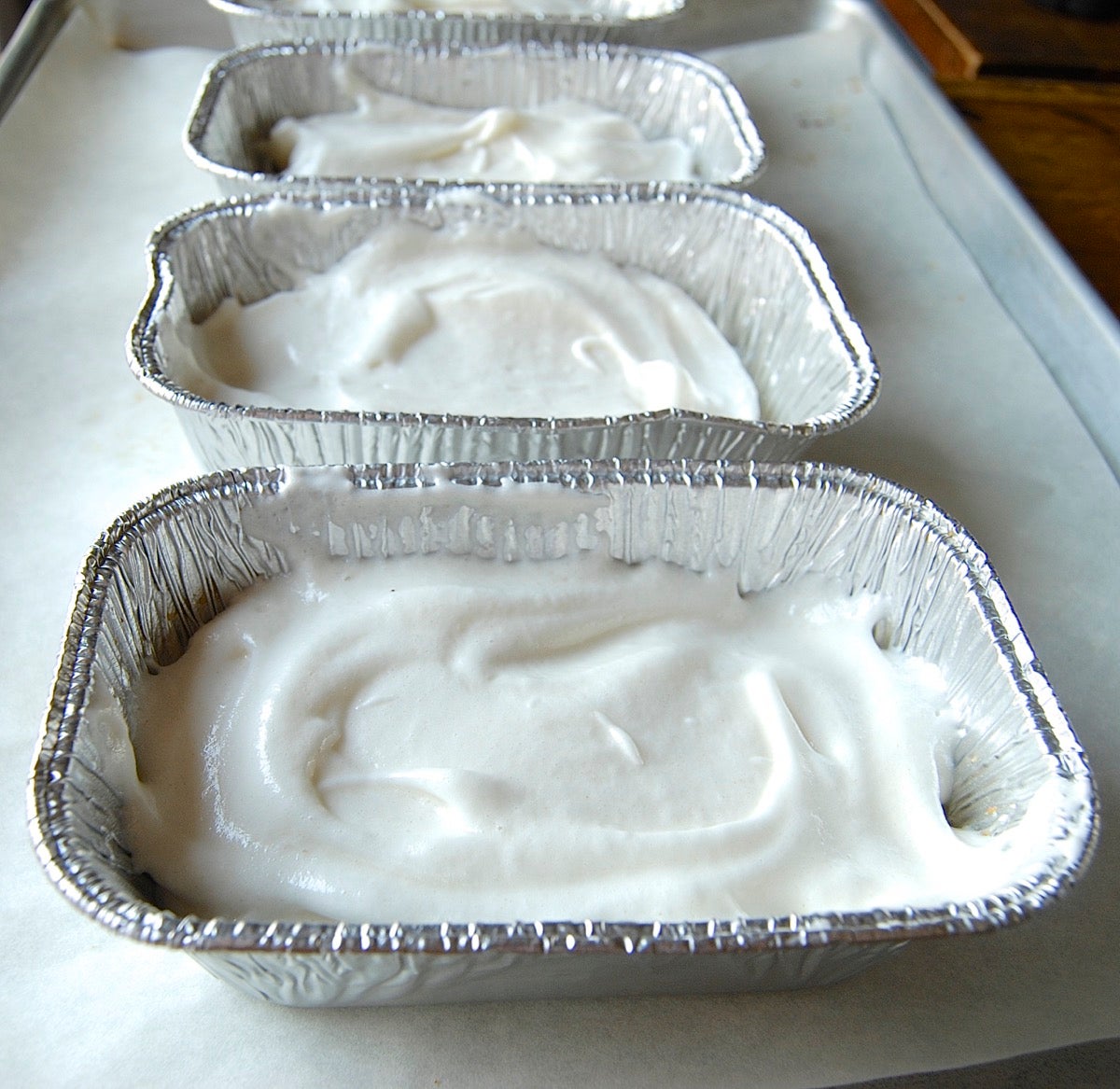
And then there are foam-style cakes — Angel Food Cake, for instance. Egg whites and sugar, beaten to a thick meringue, create cakes whose texture is super-light, but also somewhat dry and "springy:" these cakes won't fall apart at the mere sight of your fork, and thus are great for filling and rolling (think Bûche de Noël).
I put my head together with Melanie Wanders, a talented baker who works in our King Arthur Flour Bakery and also teaches at our baking school. After we agreed on a plan, Mel tested three different recipes for each of these four cake genres (blended, creamed, sponge, foam). She used different amounts of sugar in each, as follows:
Mel's results are surprising to both of us. After years of believing that using the full amount of sugar in a cake recipe is critical to the cake's texture, we can now say — it ain't necessarily so.
Says Mel, "This was a really surprising project for me. I had anticipated to see a lot of height and color difference across mixing methods, but that wasn't the case."
Let's take our data and draw some conclusions that you can put to work with your own favorite cake recipes.
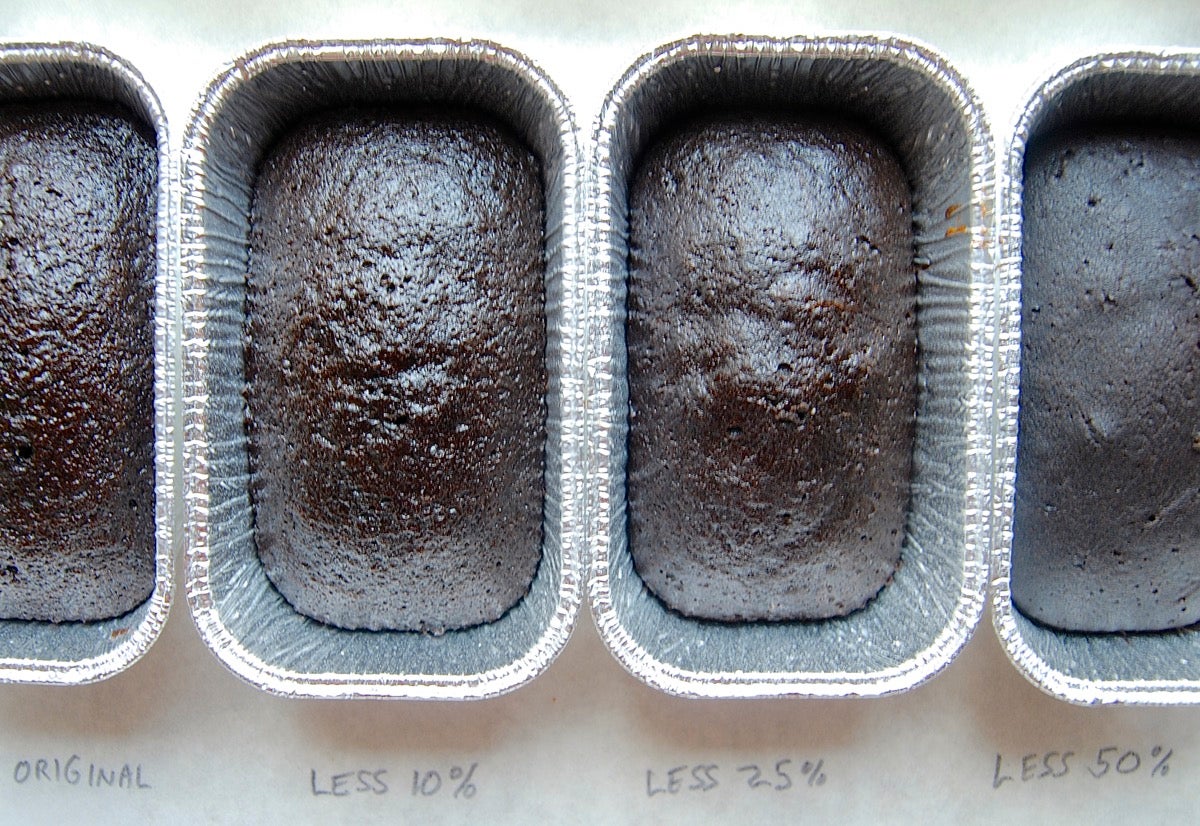
After studying Mel's test results, comprised of a dozen different recipes representing four types of cake, we believe you can reduce the sugar in any cake recipe by 10% without compromising its flavor or texture.
In fact, Mel reports the foam-type cakes are better with a 10% reduction: "I felt that the structure [with a 10% sugar reduction] was best in all three recipes I tested — there was no sinking."
Now, is this successful 10% sugar reduction applicable to every cake recipe in the universe? I can't guarantee that. But I feel confident that you can take your favorite cake recipe, cut the sugar by 10%, and be very happy with the result.
The easiest way to make this 10% reduction? Remove 5 teaspoons from each cup of sugar called for in the recipe.
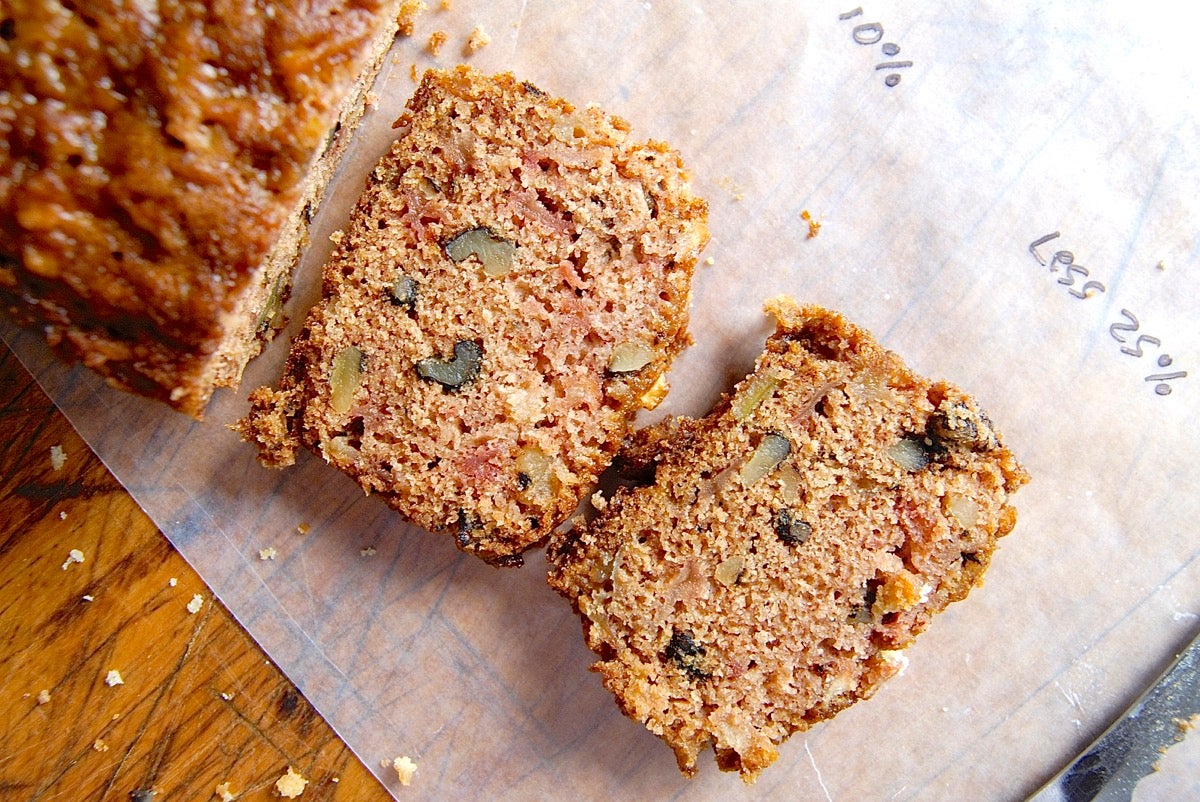
"I found no difference in any of the four sugar levels in blended cakes [original, and 10%, 25%, and 50% reductions] other than how sweet you like things," said Mel. "And for cakes with fruit in them already, I think the baker can decide to use any of the reduction amounts."
The only reservation we have with this blanket endorsement of wholesale sugar reduction is for chocolate cake (e.g., Cake Pan Cake). Cocoa's bitterness demands a certain level of sweetness to keep it palatable. So if you're reducing sugar in chocolate cake, start with 10%, and take it down from there.

Mel prefers a 10% sugar reduction to the original in creamed cakes. However, "To move to a 25% reduction or more would be too much for most bakers, in my opinion," she said, adding that at 25% she had trouble with creaming, and with the batter separating.
Still, if you want to reduce the sugar in your favorite creamed cake recipe by 25%, I urge you to do your own test. I tried a 25% reduction in Brown Sugar Pound Cake (above), and certainly found the cake less sweet. But lowering the original level of sweetness allowed the butter flavor to shine through. And the cake's texture, though a tad drier, was perfectly acceptable.

We both find that a 25% sugar reduction in sponge cake recipes is perfectly acceptable. As with the creamed cakes, the reduced sweetness allows other flavors to emerge. And their texture is excellent: moist, fine-grained, and high-rising.
Speaking of texture, though, we find sponge cakes tend to suffer when you cut their sugar by 50%. While they're still fine-grained, they don't rise as high, and become unpleasantly rubbery.
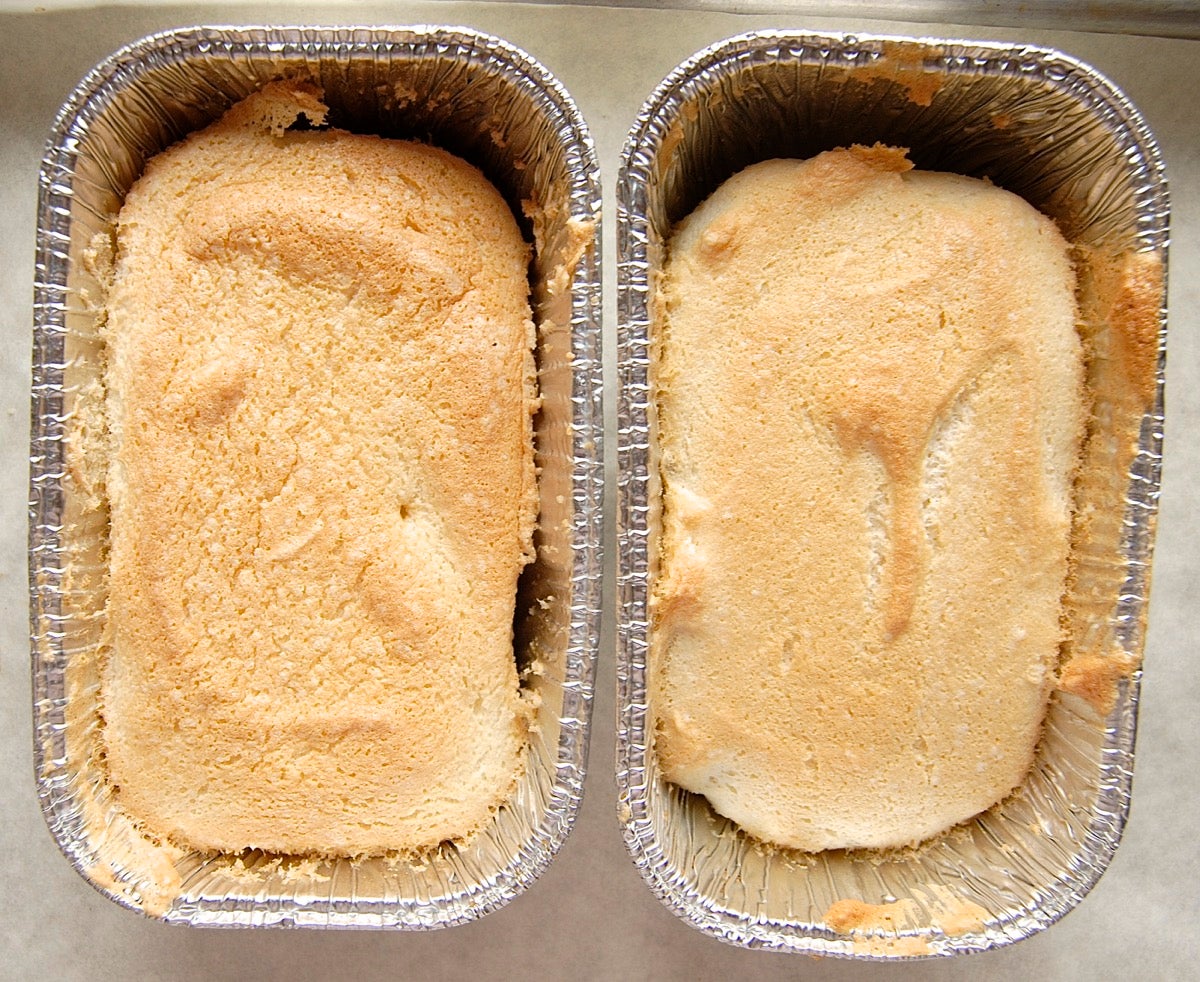
Baking an angel food cake? Go ahead, reduce the sugar by 10%. Beyond that, though, you risk compromising texture. Says Mel, "Reducing sugar by more than 10% in foam cakes results in texture changes and an egg flavor that's too pronounced for me."
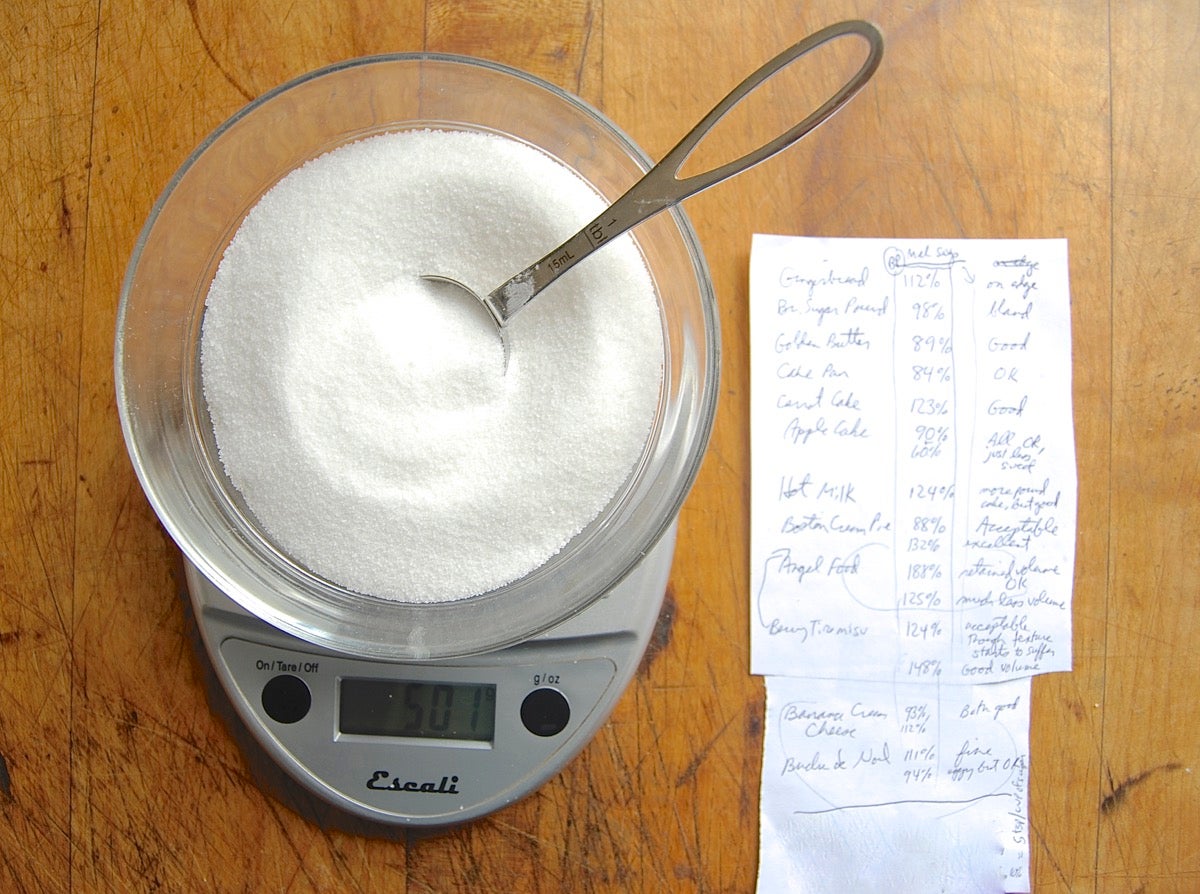
Savvy bakers understand how to manipulate the ingredients in their favorite recipes using baker's percentage: comparing the weight of each ingredient in a recipe to the weight of the flour.
Example: Your favorite yellow cake recipe calls for 1 1/2 cups (298g) sugar and 2 cups (241g) flour. 298 ÷ 241 = 1.24. The baker's percentage of sugar in this recipe is 124%: not atypical for a cake.
After figuring the baker's percentage of sugar for each of the recipes tested, in all their iterations, I'd suggest that a baker's percentage of sugar between 80% and 125% will yield reliably good results in all types of cake. An exception is foam cake: you should stick with reducing the sugar in these by no more than 10%. For high-rising angel food cakes, that translates to a baker's percentage somewhere north of 200%. For flat foam cakes that'll be rolled up like a jelly roll, keep the baker's percentage around 110%.
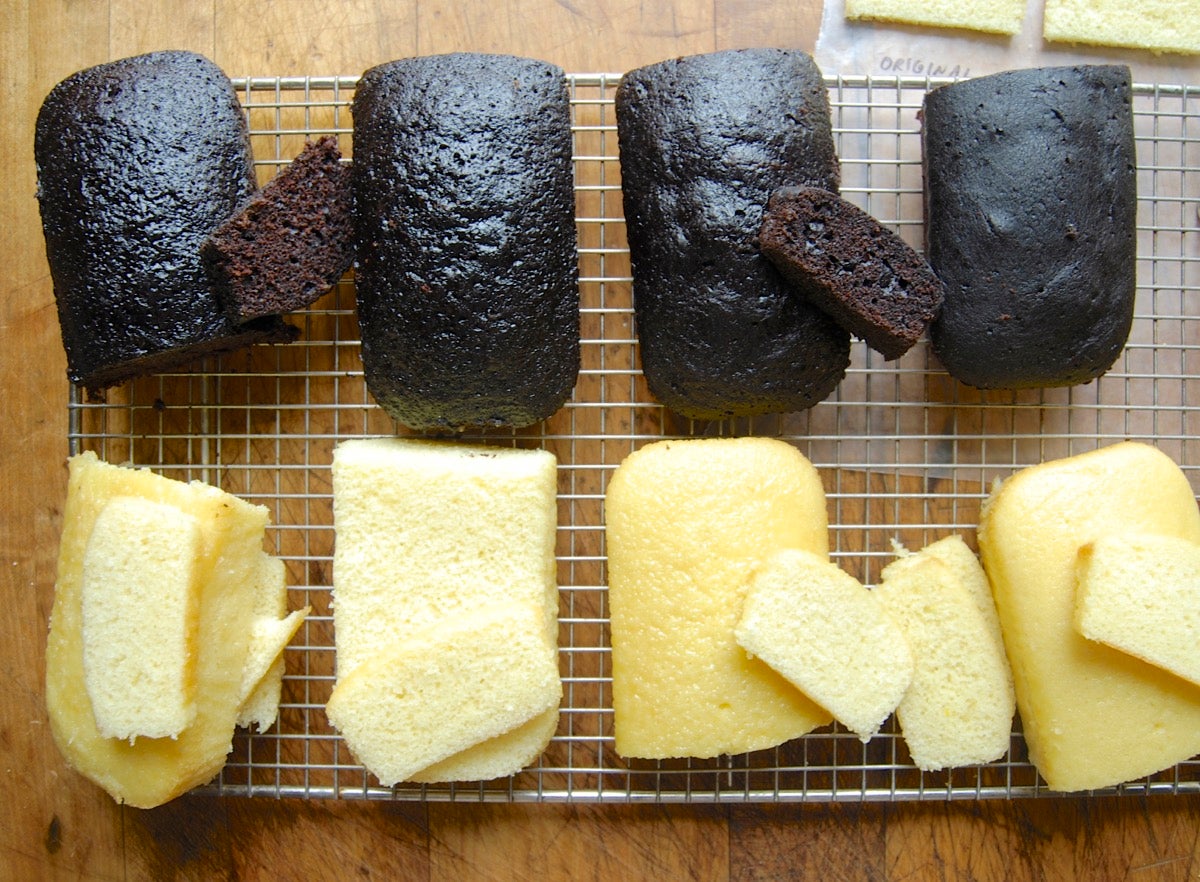
Bottom line: Lots of tests; lots of data; lots of cake!
Honestly, don't be afraid to cut back the sugar in your favorite cake recipes. Start with a simple 10% reduction: 5 teaspoons scooped out of each cup of sugar. If you like the results (and you're not baking an angel food-type cake), remove more sugar the next time. You'll soon discover what works best for you — and your family.
Want more tips for reducing the sugar in your baking? Read these posts:
How to reduce sugar in muffins
How to reduce sugar in cookies and bars
How to reduce sugar in yeast breads
How to reduce sugar in pie